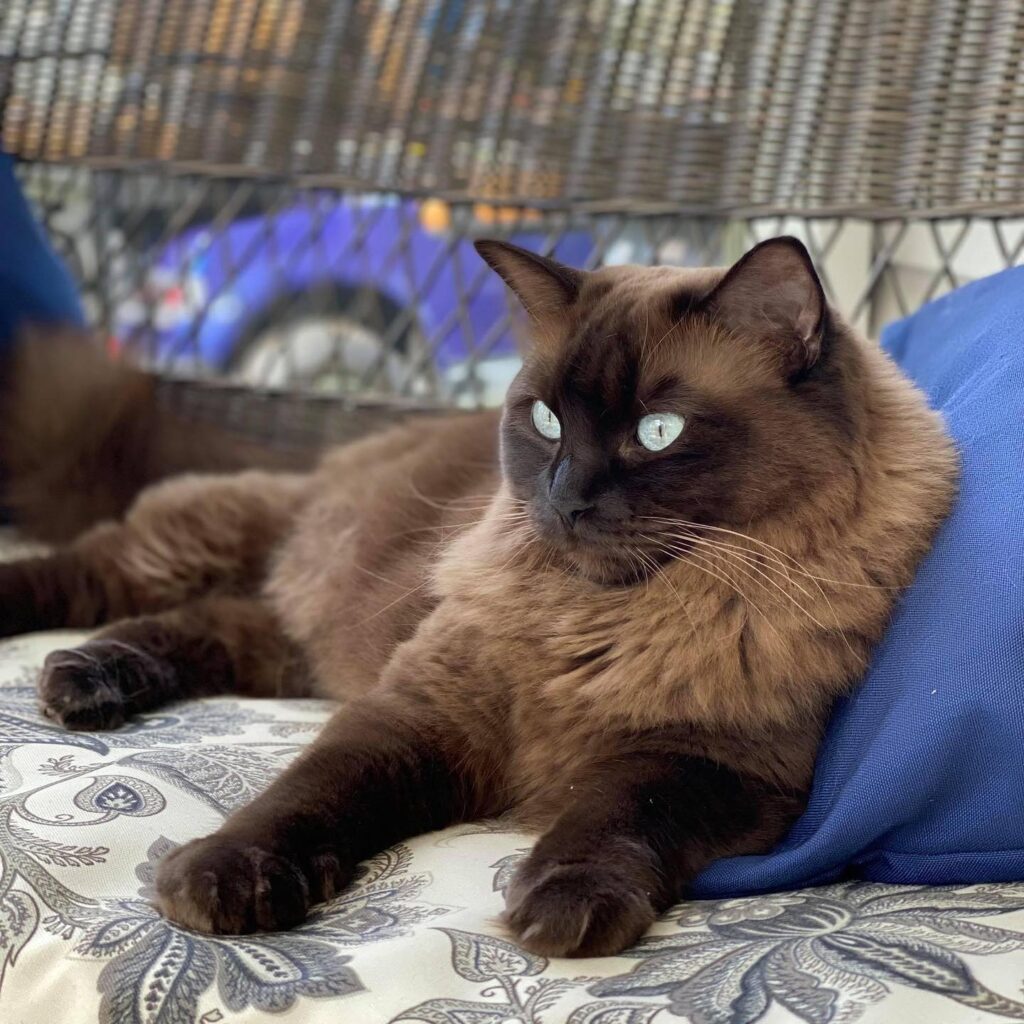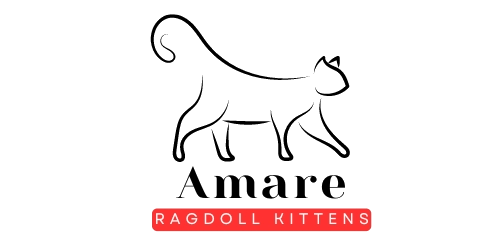Frequently asked questions
First time or experienced cat owners can have a lot of questions regarding the Ragdoll cat breed or our adoption process. Here is a list of common questions we get asked and wanted to make them available for our prospective Amare Ragdoll family members. Our blog covers important topics as well, such as color and patterns of the Ragdoll cat, preventable genetic conditions, and the importance of purchasing a kitten from a TICA registered breeder. Our small, family-run nature allows for a personal touch in every aspect of the breeding process. The owner's background as a science teacher adds an element of rigor to the care and breeding practices. His sons' involvement increases play, further enhancing the kittens' socialization and development. We hope you find what you’re looking for and be sure to reach out to us for any additional questions you may have.

What makes Ragdoll cats different from other breeds?
Are Ragdoll cats good with children and other pets?
What is the average lifespan of a Ragdoll cat?
The average lifespan of a Ragdoll cat is between 12 to 15 years, although with proper care, some can live even longer.
Ensuring you are working with a reputable Ragdoll breeder is crucial for the health and quality of your future Ragdoll cat. Here are some tips for identifying a good breeder:
Pedigree Transparency: While many Ragdolls may have a Supreme Grand Champion in their lineage, this alone is not an indicator of quality. A reputable breeder should provide detailed pedigree information and explain the significance of the lineage concerning the quality of their cats.
DNA Testing and Health Screening: Look for breeders who perform DNA testing and screen their breeding cats for genetic health diseases. This ensures that the cats they breed are healthy and reduces the risk of genetic disorders in kittens.
Knowledge of the Ragdoll Standard: A good breeder should be knowledgeable about the Ragdoll breed standard. They should be able to provide detailed information about the breed’s characteristics, temperament, and care requirements.
Breeding for Quality, Not Quantity: Avoid breeders who only breed for pets without considering the breed’s improvement. A reputable breeder focuses on producing high-quality Ragdolls that adhere to the breed standard and improve with each generation.
Shows Their Cats: A reputable breeder participates in cat shows and aims to improve the breed. This involvement shows their commitment and adherence to breed standards.
By considering these factors, you can find a reputable Ragdoll breeder who prioritizes the health, quality, and betterment of the breed.
Some common health issues in Ragdoll cats include hypertrophic cardiomyopathy (HCM), urinary tract issues, and obesity. Each associated health issue has very simple preventive measures.
HCM – Hypertrophic Cardiomyopathy is A Genetic Condition: All of Danu Ragdoll’s Queen’s and Stud’s are tested by Optimal Selection Feline to ensure our breeding stock do not carry the HCM mutation. HCM does not affect our kittens nor will impact your cat down the road because their parents have healthy genetics related to their cardiovascular systems.
UTI – Preventing urinary tract infections (UTIs) in cats involves several proactive measures:
Clean Litter Box Daily: Maintaining a clean litter box reduces the risk of bacterial contamination.
Adequate Litter Boxes: Provide a litter box for each cat plus one extra to monitor health and reduce contamination.
Fresh Water Supply: Ensure a consistent supply of clean, fresh water to encourage hydration.
Stress Reduction: Minimize stress by keeping litter boxes in quiet, calm areas.
Monitor High-Risk Factors: Pay extra attention to cats over the age of 10 and those that are not spayed or neutered.
Probiotics and Supplements: Consult your vet about supplements like D-mannose for cats with recurrent bladder infections.
Always consult a veterinarian for a diagnosis and treatment plan if your cat shows symptoms of a UTI.
Obesity – Considerations in Preventing Obesity in Ragdoll Cats: Given that Ragdolls grow slowly and retain their kitten-like nature for several years, here are some tailored tips to manage Ragdoll cat’s and kitten’s diet and exercise while considering their unique growth pattern:
Diet Tips
Growth Phase Nutrition: During their growth phases, ensure that their diet is rich in nutrients to support their development. High-quality kitten food is often a good choice until they reach maturity.
Monitor Growth: Regularly check your Ragdoll’s weight and body condition. They should have a healthy layer of fat during growth but shouldn’t appear overweight.
Transitioning Food: As they grow older, transition them gradually from kitten food to adult food around the age of one, but continue to monitor their growth and adjust their diet as needed.
Preventing obesity in Ragdoll cats involves several key strategies:
Balanced Diet
High-Quality Food: Feed your Ragdoll high-quality cat food that is appropriate for their age, weight, and health condition.
Portion Control: Follow the feeding guidelines provided by the food manufacturer, but adjust as needed based on your cat’s weight and activity level.
Scheduled Feeding: Stick to a regular feeding schedule rather than free-feeding. This helps control the amount of food your cat consumes.
Regular Exercise
Interactive Play: Engage your Ragdoll in daily play sessions using toys like feather wands, laser pointers, and balls.
Climbing Structures: Provide cat trees or shelves to encourage climbing and jumping.
Puzzle Toys: Use puzzle feeders or treat-dispensing toys to make your cat work for their food, promoting physical and mental stimulation.
Monitor Weight and Health
Regular Weigh-Ins: Weigh your cat regularly to track their weight and make adjustments to their diet and exercise routine as needed.
Vet Check-Ups: Schedule regular veterinary visits to monitor your cat’s health and get professional advice on weight management.
Healthy Treats
Limit Treats: Treats should make up no more than 10% of your cat’s daily caloric intake.
Healthy Options: Choose low-calorie, high-protein treats or use small pieces of their regular food as treats.
Hydration
Water Access: Ensure your cat has access to fresh water at all times.
Wet Food: Consider incorporating wet food into their diet to increase water intake and provide a feeling of fullness with fewer calories.
